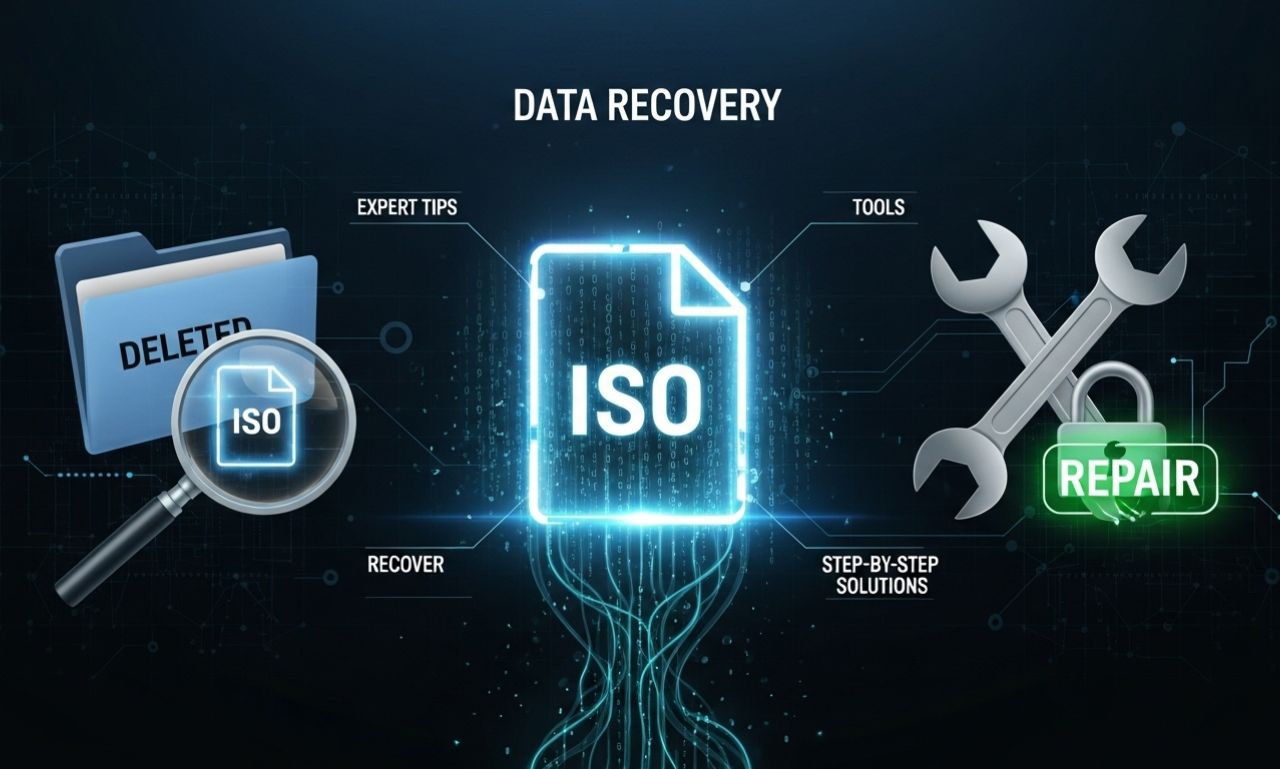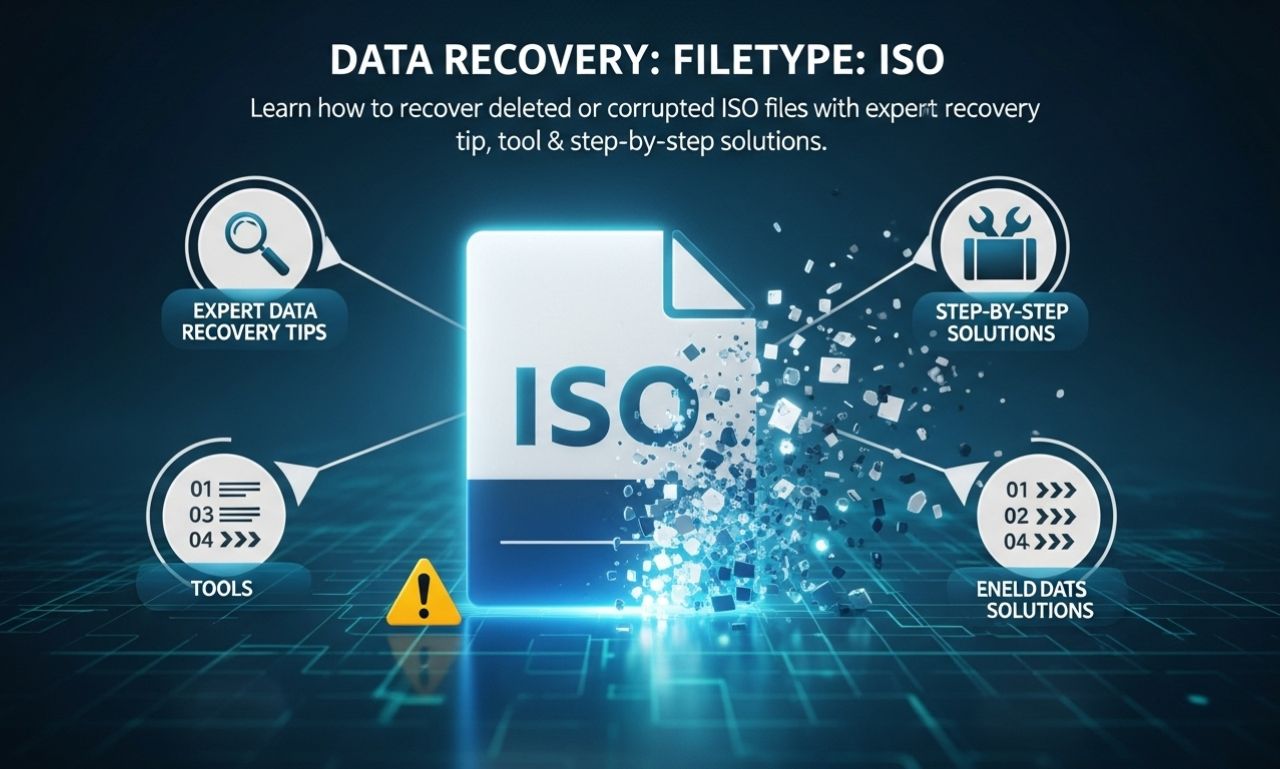In the digital world, ISO files play a crucial role in storing disk images. Whether you use them for operating system installations, software distributions, or backups, losing an ISO file can be frustrating. Accidental deletion, formatting errors, or corruption can render your data inaccessible. This is where data recovery filetype:iso strategies come into play.
In this comprehensive guide, we’ll explore:
- What an ISO file is and why it’s important.
- Common causes of ISO file loss.
- Step-by-step ISO data recovery methods.
- Free and professional ISO recovery tools.
- Preventive tips to protect ISO files in the future.
By the end, you’ll have a clear roadmap to restore your lost or corrupted ISO files efficiently.
What is an ISO File?
An ISO file, also called an ISO image, is a single digital file that contains the entire contents of a CD, DVD, or Blu-ray disc. It replicates the disc’s file system, making it possible to store, distribute, and use software or operating systems without physical media.
Key uses of ISO files include:
- Operating system installation (Windows, Linux, macOS distributions).
- Software distribution (games, large applications, and utilities).
- Backup and archiving (storing full disc images).
- Virtual machines (VMware, VirtualBox, Hyper-V boot disks).
Because of their large size and importance, losing ISO files can be a serious setback, especially for IT professionals, developers, and gamers.
Common Causes of ISO File Loss
Before diving into data recovery filetype:iso, it’s important to understand why ISO files get lost or corrupted.
- Accidental Deletion
- Mistakenly sending ISO files to the recycle bin or permanently deleting them.
- Formatting Errors
- Formatting a hard drive, USB, or external drive containing ISO files.
- Corruption or Incomplete Transfer
- ISO files often exceed several gigabytes. A sudden interruption during transfer or download can cause corruption.
- Virus or Malware Attack
- Malicious software can damage or delete large files, including ISOs.
- File System Errors
- Issues like bad sectors, partition loss, or drive corruption.
- Power Failures or System Crashes
- Interruptions during download, copy, or mounting can render ISO files unusable.
Can ISO Files Be Recovered?
Yes, in most cases, ISO files can be recovered if the lost data sectors have not been overwritten. When an ISO file is deleted, the operating system marks the space as “available,” but the actual data remains on the disk until replaced.

That’s why quick action is critical:
- Stop using the affected drive immediately.
- Avoid installing new software on the same storage.
- Use a trusted ISO recovery tool to scan and restore files.
Methods for Data Recovery Filetype:ISO
1. Check the Recycle Bin or Trash
The first step is simple: check if the ISO file is still in the recycle bin (Windows) or trash (macOS/Linux). If present, you can restore it instantly.
2. Use File History or Backup
If you have backup systems like Windows File History, Time Machine, or cloud backup, restoring an ISO file is straightforward.
3. Command Prompt Recovery (Windows)
For users with some technical expertise, you can attempt recovery via CMD.
- Open Command Prompt as Administrator.
- Run:
(Replace X with your drive letter.)
This scans and attempts to restore lost ISO files.
4. Professional ISO Recovery Software
If the file is not in backups or recycle bin, using a data recovery tool is the best option.
Popular options include:
- EaseUS Data Recovery Wizard
- Disk Drill
- Recuva
- R-Studio
- Stellar Data Recovery
These tools support filetype-based recovery, allowing you to search specifically for .iso files.
Steps with recovery software:
- Install the tool (preferably on a different drive).
- Launch the program and select the affected drive.
- Use the filter/search function: enter filetype:iso.
- Scan the drive and preview recoverable files.
- Restore the desired ISO files to a safe location.
5. Linux-Based ISO Recovery
For Linux users, tools like TestDisk and PhotoRec are reliable.
PhotoRec allows you to specify recovery by filetype, including .iso.
Run:
Then select drive → specify filetype → recover ISO files.
Advanced Data Recovery Filetype:ISO Tips
- Recover Partially Downloaded ISO Files
- Use torrent clients or download managers that support resuming.
- If corruption occurred, specialized tools like PowerISO or MagicISO may attempt to repair them.
- Recover Corrupted ISO Files
- Tools like Wondershare Repairit or SysInfo ISO Recovery can rebuild corrupted disk images.
- Virtual Machine ISO Recovery
- If your VM ISO boot file is lost, recover the file from host storage using recovery software, then remount it in VMware/VirtualBox.
Preventing ISO File Loss in the Future
Prevention is better than recovery. Follow these practices:
- Enable Automatic Backups – Use Windows Backup, Time Machine, or third-party cloud services.
- Use Reliable Storage Media – Avoid cheap USB drives for long-term ISO storage.
- Keep Antivirus Updated – Prevent malware-related file loss.
- Verify Downloads – Use checksums (MD5, SHA-256) to confirm ISO integrity.
- Create Multiple Copies – Store ISO files across external drives, NAS, and cloud storage.
- Safely Eject Devices – Prevent file system corruption by properly ejecting drives.
Frequently Asked Questions
1. Can I recover ISO files from a formatted drive?
Yes, but only if the space has not been overwritten. Use professional recovery software.
2. Are recovered ISO files always usable?
Not always. If parts of the file were overwritten, the ISO may be corrupted. Repair tools might be needed.
3. Is there a free way to recover ISO files?
Yes, free tools like Recuva or PhotoRec can recover .iso files without cost, though advanced features are usually premium.
4. How large can ISO files be for recovery?
ISO files often exceed 4GB. Most modern recovery software supports large files, but you’ll need enough storage space for recovery.
5. Can I search specifically for ISO files during recovery?
Yes, most software allows filtering by extension, making data recovery filetype:iso very efficient.
Conclusion
Losing ISO files can be a major inconvenience, but with the right approach, recovery is often possible. By using data recovery filetype:iso strategies such as checking recycle bin, backups, command-line recovery, and professional ISO recovery software, you can restore deleted or corrupted files effectively.
To avoid future headaches, always maintain backups, use reliable storage devices, and practice safe file management. ISO files are too important—whether for operating systems, software, or archives—to leave unprotected.
With the right recovery methods and preventive practices, you can ensure that your critical ISO images remain safe and accessible.
